You don’t have to be a royal enthusiast to appreciate Windsor Castle. Seriously, how many 900-year-old fortresses set amidst stunning parks have you explored? If you want to see this incredible castle, you’ll need to plan ahead and know where to spend your time. Here’s my list of the top things to see at Windsor Castle.
Pro Tip: Planning what to do on your trip to London? Bookmark this post in your browser so you can easily find it when you’re in the city. Check out our guide to London for more planning resources, our top London tours for a memorable trip, and how to visit Windsor Castle.
17 Must-See Things at Windsor Castle
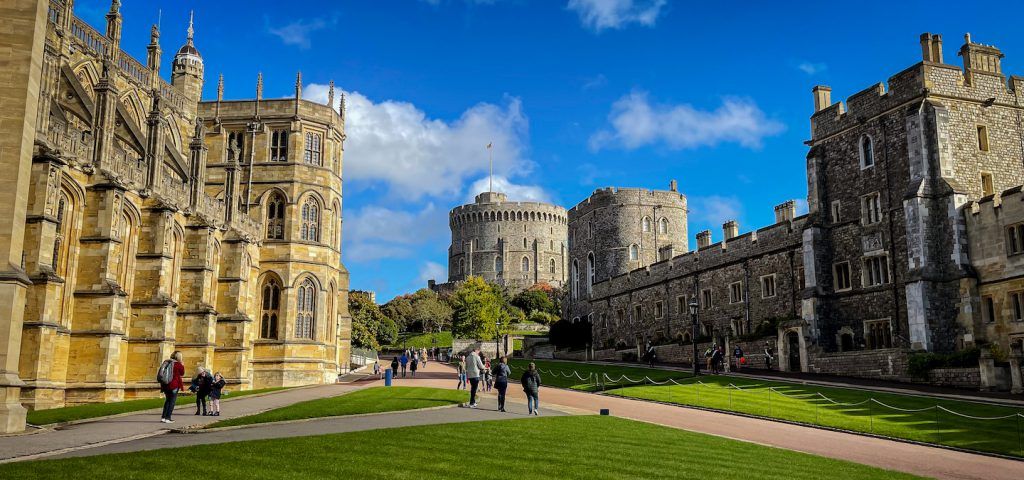

It’s hard to overstate how important Windsor Castle is to Britain. It’s been the seat of the British Monarchy for almost 1,000 years and is the oldest inhabited castle in the world. The ancient fortress protected Her Majesty Queen Elizabeth II as a child during World War II. It’s also home to the highest order of chivalry in England, the Most Noble Order of the Garter.
Over a million visitors see Windsor Castle every year because of its central connection to British History. It is a historic fortress, royal palace, and family home. The 11th-century castle has been an official residence to 39 Monarchs since 1110, making it one of the longest-inhabited castles in the world.
Windsor Castle is also set in a stunning location on the Thames, surrounded by acres of parkland. I would recommend spending a whole morning at Windsor to see it without rushing.
Everyone who visits London should make time to leave the city center to visit Windsor. With so much history and significance, it could be overwhelming on your own. I’ve narrowed down the top things to see at Windsor Castle to help make it a little easier. Also, if you want to get more out of your visit, join one of our Windsor Castle tours.
Not ready to book a tour? Find out if a Windsor Castle tour is worth it.
17. Upper Ward
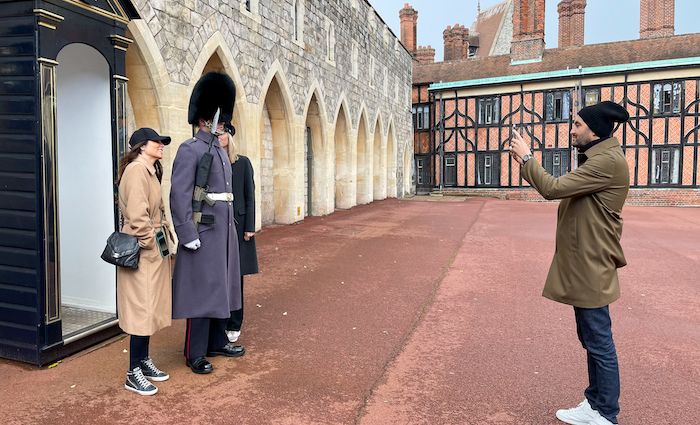

The Upper Ward is where the State Apartments, Semi-State Rooms, and the private residences of His Majesty The King and the Royal Family are. It’s easy to see this first as it is closest to the entrance and audio guide pickup.
16. The Lower Ward
The stunning St. George’s Chapel dominates the Lower Ward. The changing of the Guard takes place in the courtyard here next to the chapel. The 45-minute ceremony has taken place since 1660 and happens around 11 am every Tuesday, Thursday, and Saturday. Tickets to the castle are necessary to see the Changing of the Guard.
15. Queen Victoria Statue
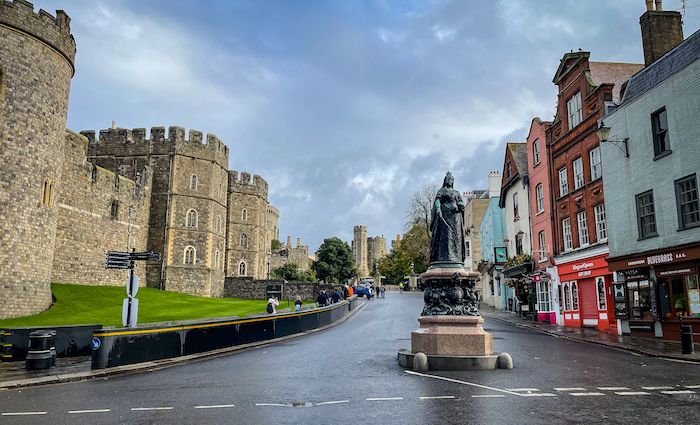

You’ll see a statue of Queen Victoria once you exit the train station shopping arcade. It’s a fitting tribute to the longest-reigning monarch (before Queen Elizabeth II surpassed her reign in 2015), known as the Widow of Windsor. When her beloved husband, Prince Albert, died in 1861, Queen Victoria fell into deep mourning and depression that lasted the rest of her life.
As the Empire grew around her to become a superpower, the queen sequestered herself mostly here at Windsor. She did not appear in public again for over 20 years. The entrance to the ticket office is a couple of meters past this statue on the right-hand side.
14. The Round Tower
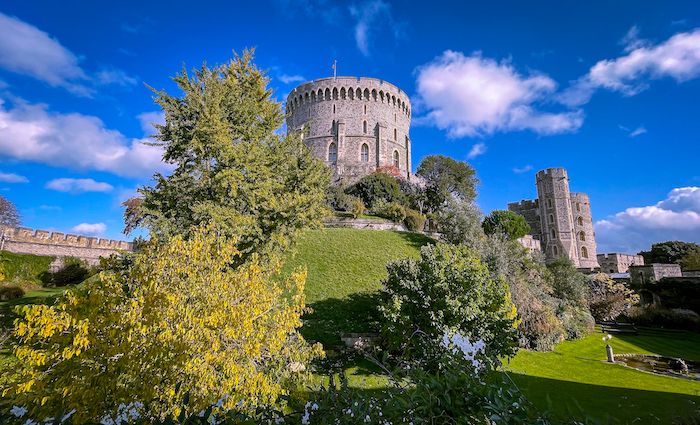

William the Conqueror chose the site to build Windsor Castle to visibly impose the Norman conqueror’s will on the Saxons in the 11th century. William would recognize this mound today on which the Round Tower sits since it was the castle’s highest point overlooking the Thames Valley. The wooden keep that originally stood here was part of the fortress’ design.
Henry III replaced the wooden keep with a stone round tower. The Round Tower was the private residence of just one monarch, King Edward III. In the 1820s, the Round Tower extension was added, which we see today. Now, the Round Tower remains one of the iconic symbols of Windsor Castle and is home to the Royal Archives.
Not ready to book a tour? Find out more about how to visit Windsor Castle.
13. Equestrian Statue of Charles II
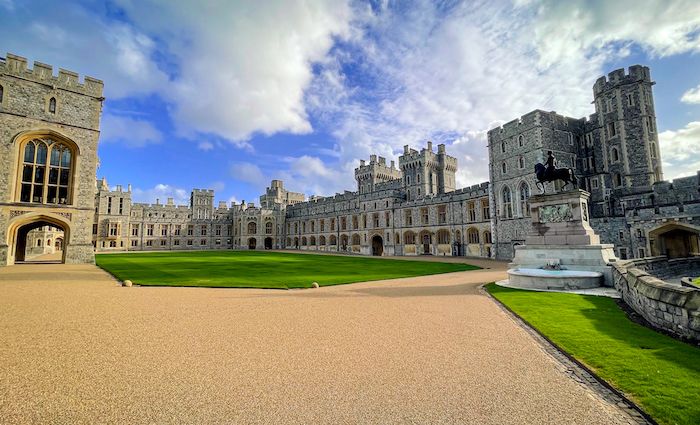

Photo courtesy of Angel Castellanos
You’ll get a brief glimpse of the Quadrangle of the Upper Ward when you walk up to the castle from the ticket office or when you exit the State Apartments. At one end of the Quadrangle, on the side of the Round Tower, is the equestrian statue of King Charles II.
Recently, the Quadrangle has been used more by the monarch for state occasions like the Trooping of the Colour and welcoming foreign heads of state.
The figure is from the 17th century and honours the king who restored the monarchy after the English Civil War. King Charles II also renovated many of the rooms in Windsor we see today. The figure is unique because it depicts the king not as English, but in the Roman style of Ceasar, complete with laurel leaf and Roman armour.
12. View of the Long Walk
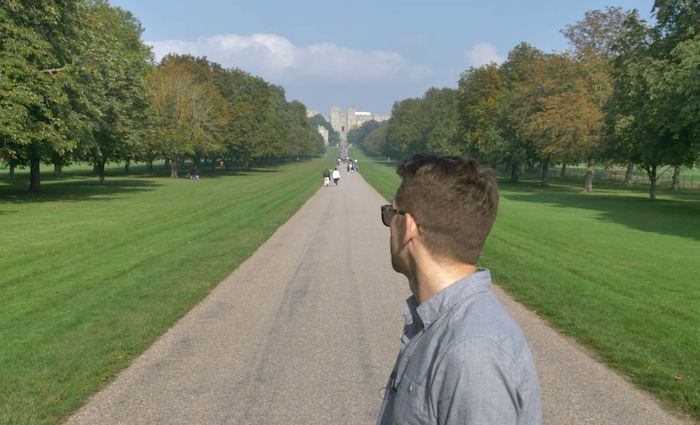

One of the best views in England is available once you enter the State Apartments and get a view of the Long Walk. The Long Walk is a beautiful 2.6-mile tree-lined thoroughfare that stretches from the castle through Windsor Great Park.
Originally built by King Charles II, the Long Walk we see today is thanks to the late Prince Philip, the Duke of Edinburgh. As Warden of Windsor Park, he replaced the original diseased Elm trees with Oak, Chestnut, and various other trees.
At the end of the walk is an equestrian statue of King George III whose love of Winsdor was well known as he was often called “Farmer George.” A stroll along the Long Walk to the statue takes about forty-five minutes to an hour.
11. Changing of the Guard
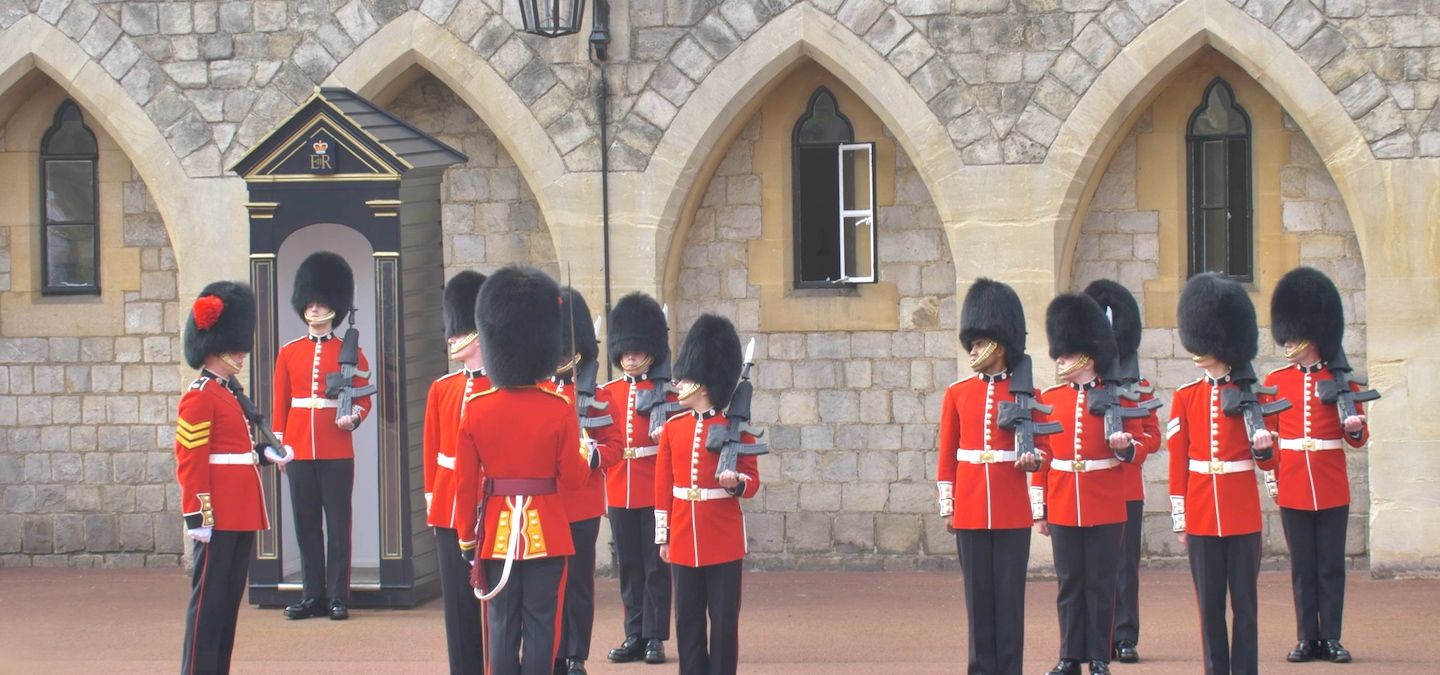

Watching the Changing of the Guard at Windsor Castle is a quintessential experience that captures the essence of British tradition and pageantry. The precision and discipline of the soldiers in their iconic uniforms create a stunning spectacle that you won’t want to miss.
Plus, the historic setting of Windsor Castle adds a magical backdrop to this ceremonial event. It’s a unique opportunity to witness a time-honored ritual that connects you to the rich heritage of the monarchy.
Changing of the Guard ceremonies take place on Tuesdays, Thursdays, and Saturdays at 11 am at Windsor Castle.
10. The State Apartments
You’ll see the State apartments once you get inside Windsor Castle. They are a series of grand rooms that give the almost 1,000-year-old castle a palace feel. The monarch uses these rooms for official state functions as Head of State.
The current design and aesthetic of the State Apartments are due to the vision of King George IV. According to historian David Starkey, this king was “the barometer of fashion and excessive in every possible way.” His love of theatrical pageantry and the French baroque style led him to renovate these sumptuous rooms.
Although the fire in 1992 damaged some rooms, the restoration spared no expense, like the renovations of the 1820s. The state apartments have been open since 1848 when Queen Victoria opened them to the public.
9. Waterloo Chamber
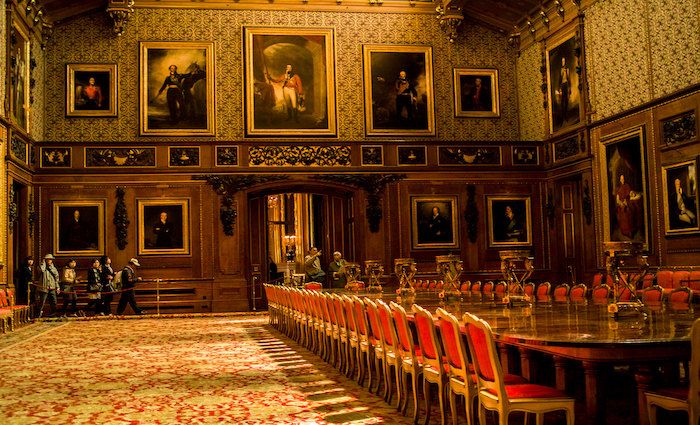

Like the Alexander Hall in the Winter Palace in St. Petersburg, there’s a room in Windsor Castle dedicated to the heroes and victors of the Napoleonic Wars. The room’s name honours the decisive Battle of Waterloo in which The Duke of Wellington and the Allied Forces finally defeated the Corsican military genius, Napoleon.
Wellington, the Czar of Russia, the Archduke of Austria, and even Pope Pius VII have massive portraits in this room. The woven carpet is from India, a gift to Queen Victoria in the late 19th century, also Empress of India.
Today, the room is home to official events hosted by the monarch and members of the Royal Family. Unfortunately, the Waterloo Chamber was under renovation at the time of publication, but it’s still a cool room to visit. Currently, the room contains the pantomime portraits that were in place during World War II.
Not ready to book a tour? Find out if a Windsor Castle tour is worth it.
8. Garter Throne Room
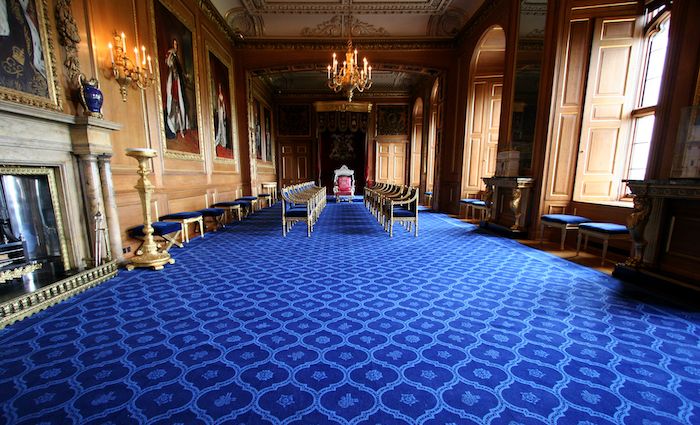

The Garter Throne Room is one of the most influential rooms in the State Apartments because it’s where the investiture of the Knights of the Noblest Order of the Garter takes place.
The Order was the oldest order of chivalry in England when King Edward III founded it in 1348 due to his love of King Arthur and the Knights of the Round Table. St. George, the saint of soldiers and nobles, to whom the Order of the Garter is dedicated, became the patron saint of England.
Appointments to the Order are made directly by the sovereign, at their discretion. The Order is limited to twenty-four living members outside the King or Queen and The Prince of Wales. Each June, they gather in this room, built during the renovations of the 1820s, for new investitures and their annual procession to St. George’s Chapel in the lower ward.
7. The Crimson Drawing Room
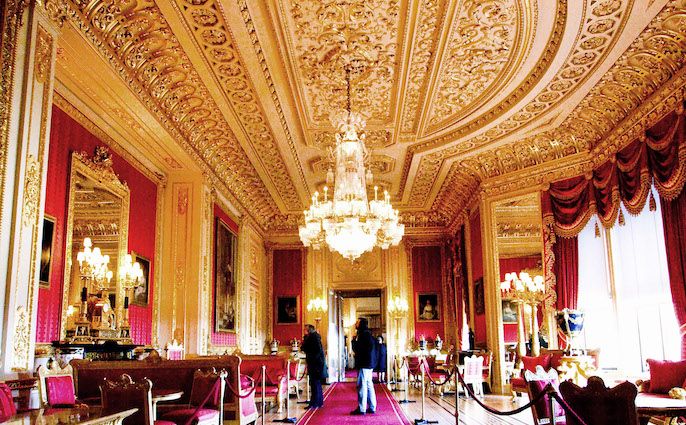

The Crimson Drawing Room is an eye-catching room in the State Apartments. Dripping with gold and crimson velvet, it’s a fine example of the intention of the renovations by King George IV during the 19th century. There are some portraits of his siblings in this room, but the state portraits of His Majesty King George VI and Queen Elizabeth The Queen Mother, dominate this room.
6. St George’s Hall
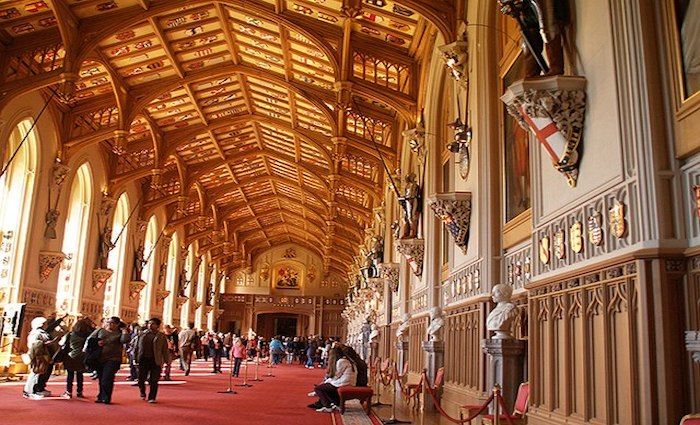

St George’s Hall in Windsor is a long room used by the monarch for official state functions and banquets. You might also remember this room when Prince Harry, The Duke of Sussex, and his wife introduced their new son, baby Archie, to the world. The room contains portraits and busts of the Stuart and Hanoverian kings and queens and various busts of notable royals who received the Most Noble Order of the Garter.
Each year the Knights of the Order of the Garter assemble here before their annual procession to St. George’s Chapel in the lower ward. If you look up, you’ll see the coat of arms of various Knights of the Order. The missing spots are from Knights who’ve had their Orders revoked during WWI.
5. The Historic State Apartments
Once King Charles II was restored to the throne in 1660, the style and splendour of the baroque replaced the simple puritanical approach that previously dominated Britain. Windsor Castle was no exception. Like every other monarch in Europe, Charles wanted to rival his cousin Louis XIV’s Palace of Versailles.
He renovated a series of rooms for his queen, Catherine of Braganza. These rooms are the finest examples of baroque architecture in England, with exquisitely decorated rooms, frescoed ceilings, and some of the most impressive art in the Royal Collection.
4. Queen’s Presence Chamber
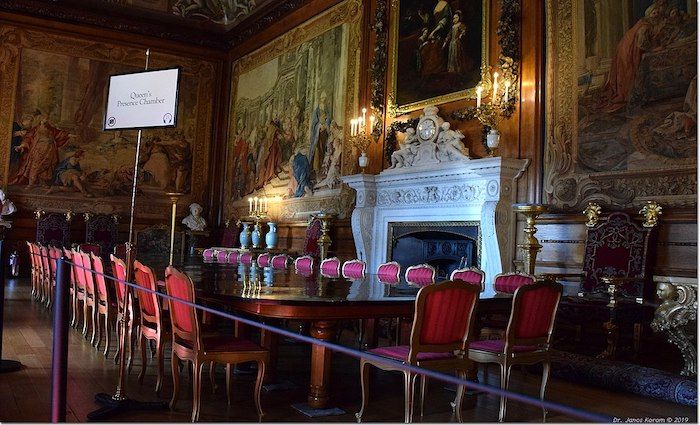

The Queen’s Presence Chamber is one of the series of lavish rooms built for Queen Catherine of Braganza, wife of Charles II. The paintings, rich tapestries, and frescoed ceiling by Italian artist Antonio Verrio will instantly transport you to the late 17th century. The painted ceiling shows Queen Catherine in an allegorical scene surrounded by Virtues. One of the few paintings of Prince William, Duke of Gloucester, is in this room.
This young prince was the only son of Princess Anne (later Queen Anne) and the grandson of King James II. The hope of cementing Protestant rule in Great Britain rested on the eventual succession of young Prince William. Unfortunately, the young prince didn’t live past his 12th birthday, and his death changed the course of British history forever.
Not ready to book a tour? Find out if a Windsor Castle tour is worth it.
3. The Queen’s Gallery
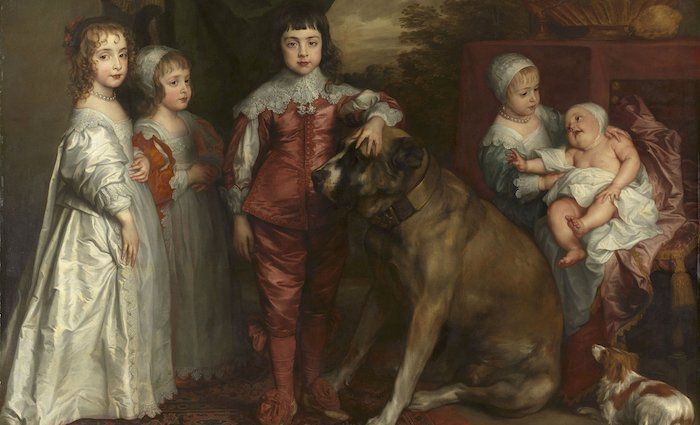

Before the 1830s, the Queen’s Gallery was the main ballroom of the State Apartments. Queen Victoria decided to hang several Van Dyck’s in this room, giving it its current appearance.
There are usually 11 in total in this room, including the masterful Charles I on horseback. Copies of this painting adorn influential stately homes throughout the country. You might recognize it from “Downton Abbey” since a copy hangs in their breakfast room.
Don’t miss the exquisite Five Eldest Children of Charles I, which features the future Charles II, James II, and Princess Royal, who became the mother of William III.
2. The Queen’s Drawing Room
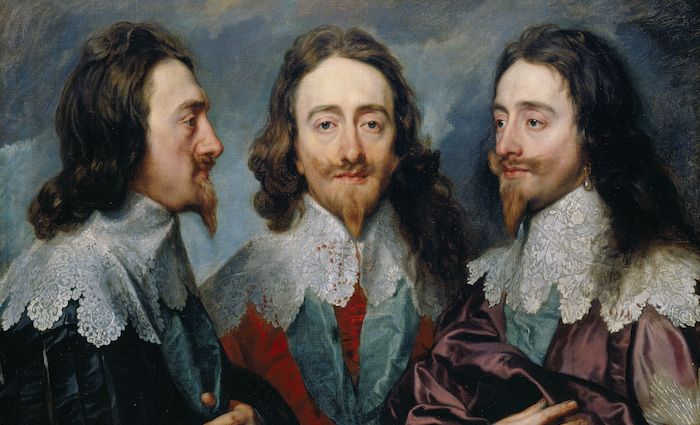

Although this room was originally a room for Queen Catherine of Braganza, it is now a significant picture gallery of the Royal Collection. The old masters line the room and allow us to come face to face with the actual paintings we’ve only seen in history books of the Tudor and Stuart Monarchs.
Holbein and Van Dyck make up a majority of the historic portraits. The triple portrait of King Charles I by Van Dyck was a study for Bernini. The king had the unique picture painted as a study for a commissioned marble bust.
1. St George’s Chapel
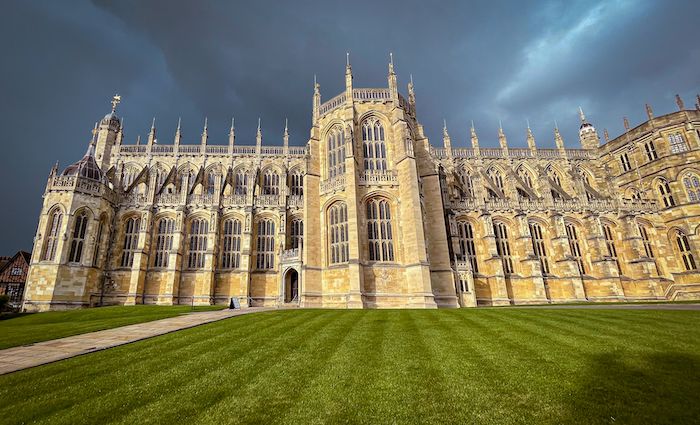

St George’s Chapel is the heart and soul of Windsor Castle and is, without doubt, one of the top things to see at Windsor Castle. When King Edward III founded the Order of The Garter in 1348, there was already a chapel at Windsor. It was quickly rededicated to St. George to become the Order’s home.
Be sure to see the various banners of the members of the Order that hang in the quire and the collection of plaques in the stalls from all the previous members.
The construction of the chapel we see today began in 1475, and King Henry VII added the famous vaulted ceilings. Architecturally, the chapel is one of the most significant examples of the Gothic Perpendicular in England.
Bonus: The Royal Connection to St. George’s Chapel
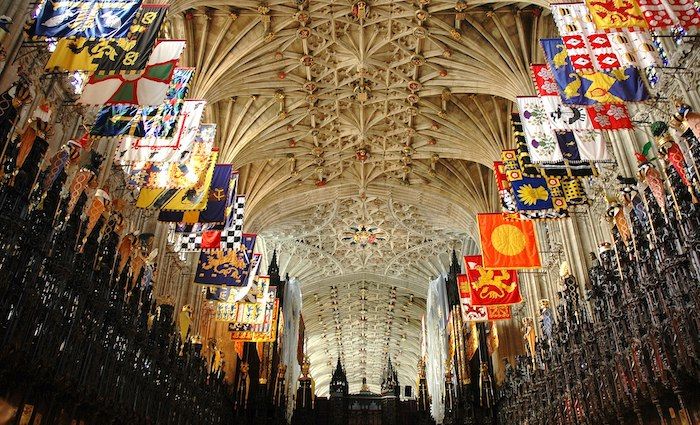

St George’s Chapel is also the final resting place of ten different monarchs dating back to King Edward IV in 1483. There are various side chapels in which various monarchs, including Queen Elizabeth II’s parents, are buried.
In front of the high altar, look for a black stone marker on the floor of the quire that marks the burial place of King Charles I and King Henry VIII. Recently, St. George’s chapel was the location for the internment of HRH Prince Philip, Duke of Edinburgh and Queen Elizabeth II.
Royal weddings have taken place at Windsor since 1121, and most notably, Prince Harry, Duke of Sussex, married Meghan Markle at St George’s Chapel in a grand televised ceremony.
Not ready to book a tour? Find out more about how to visit Windsor Castle.

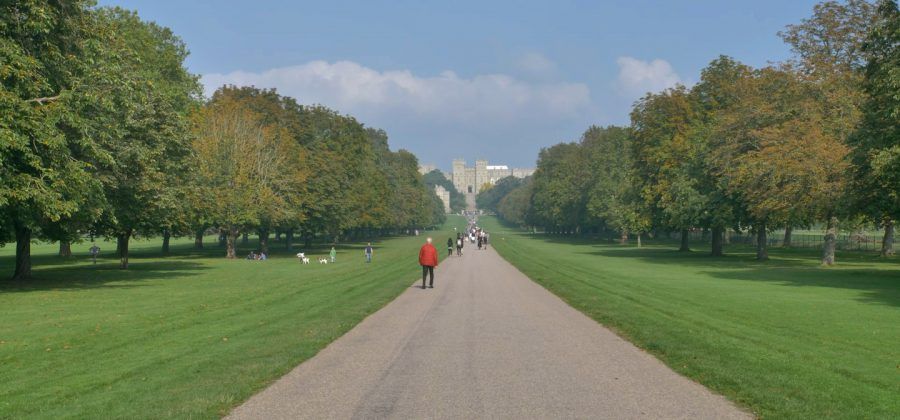
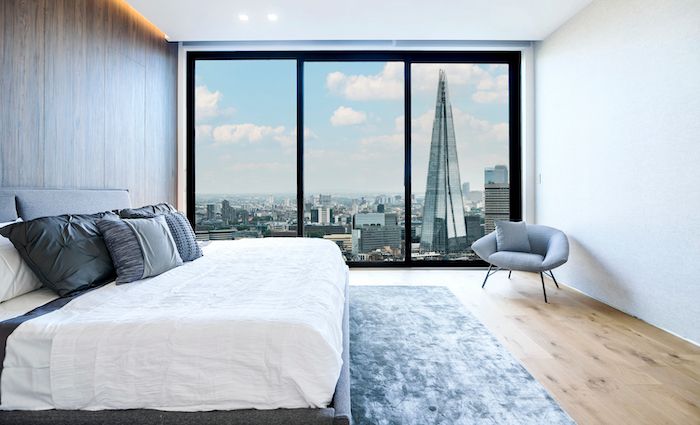
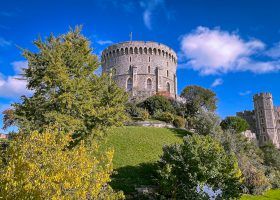
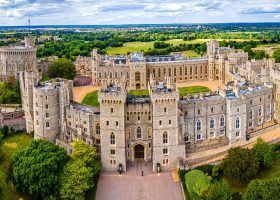
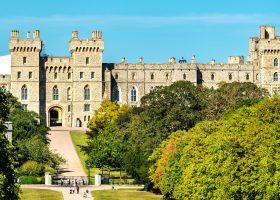
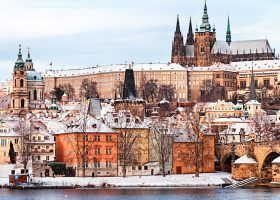
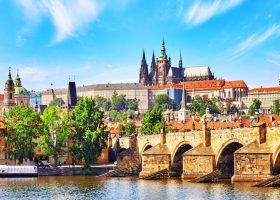
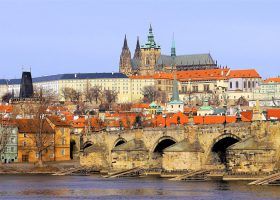


Leave a Comment